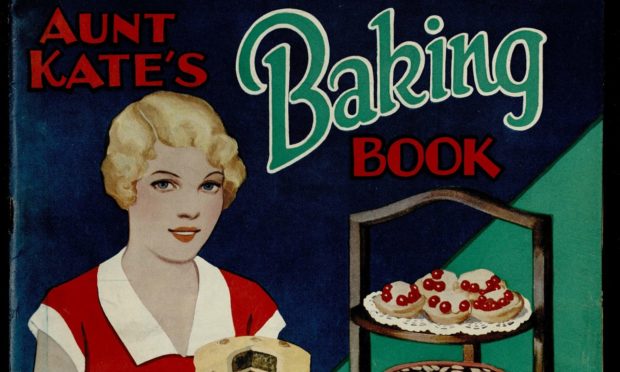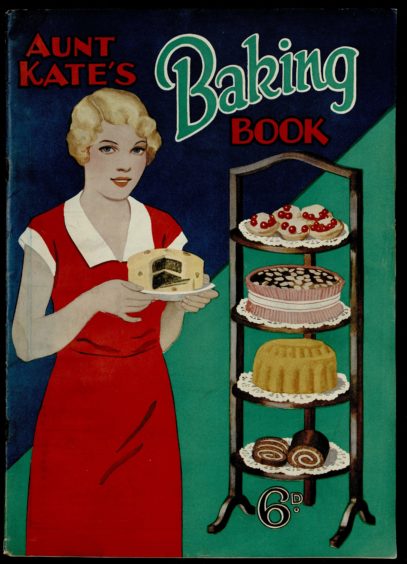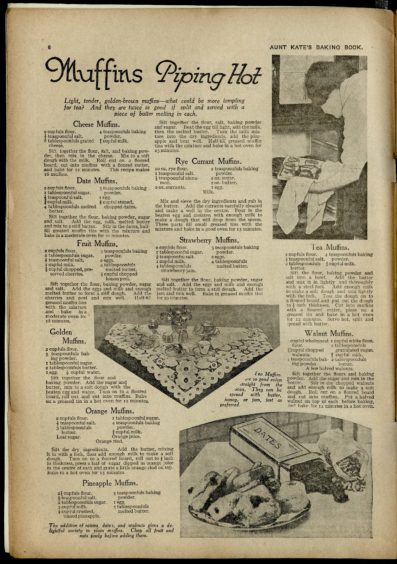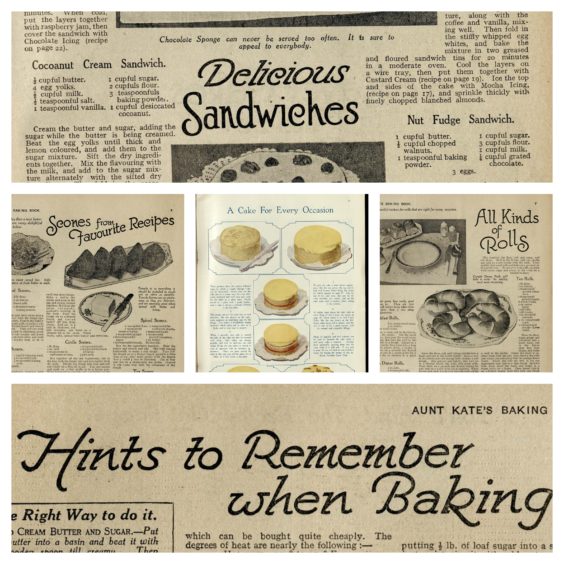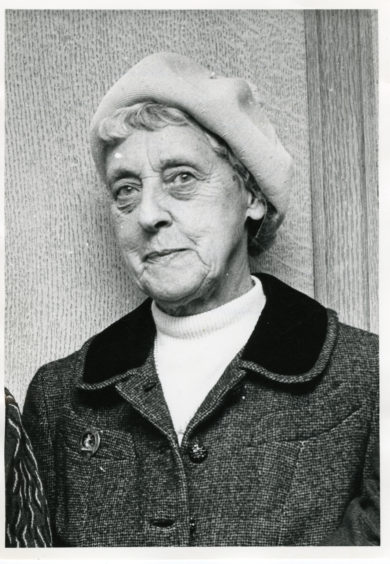A household name to many, Aunt Kate provided recipes, stories and tips in Scottish magazines from the late 1800s. Rebecca Shearer takes a look into the background and brings back some of the columnist’s classics…
She felt like a friend to the thousands who read the People’s Journal in the late 1800s and early 1900s, providing household tips, advice and recipes, many of which can be traced back to 1888.
Though she was later revealed not to be a person, but a character, many of Aunt Kate’s tips and cooking techniques are still very much in place today.
Originating as a magazine column in the People’s Journal, she then went on to pen various books, including Aunt Kate’s Baking Book (1933) and Aunt Kate’s Cookery Book (1960).
Indeed, the intro to her 1933 baking book reads:
“My Dear readers – There are very few cooking books which contain recipes for all the cakes and scones which you have always wanted to make, that is why I have prepared my new Baking Book specially for you.
“In it you will find all the old and many new and easy ways of making every kind of scone, cake and biscuit, besides many simple and helpful hints dealing with the troubles that arise on baking day.
“I do hope this book will prove useful to all my old and new readers. With very good wish, your friend – Aunt Kate”.
David Powell, archive manager at DC Thomson explained some of the history behind the Aunt Kate series.
He said: “Aunt Kate was a recurring feature appearing in the People’s Journal, published by John Leng & Co Ltd in Dundee’s Bank Street. John Leng & Co Ltd were the publishers of the morning paper The Dundee Advertiser, the weekly newspaper The People’s Journal, the afternoon paper The Evening Telegraph, and from 1869, The People’s Friend.
“The company merged with W & DC Thomson in 1905 to form DC Thomson & Co Ltd.
“From 1895 Aunt Kate’s Handy Books series was published and a second series was published in the 30s. Each book covered a different topic.
“They covered domestic matters such as cookery, baking, sewing, dress making, millinery, knitting and wool art, dream interpretation, Scottish Songs and home entertaining.
“Her short stories, or pocket novel series, Aunt Kate’s Penny Stories, were published in short book form from 1901-1909.”
Charlotte Lauder, PhD student at Strathclyde University and the National Library of Scotland, is currently researching modern Scottish magazines between 1870 and 1920.
She said: “Aunt Kate’ began in the People’s Journal in 1888 and was the newspaper’s domestic columnist. Basically, she provided recipes, cleaning advice, household tips, etc., and was an early version of an agony aunt.
“Because the People’s Journal was aimed at working class Scots, ‘Aunt Kate’ provided essential advice for women who worked full-time, had little school education, whose mothers may also have worked full-time, and who therefore needed help with how to run a household, take care of a family, cook for a family, etc.
“The ‘Aunt Kate’ column was part of a much wider feminisation of the press in the 1880s and 1890s in Britain, which was especially prominent in Dundee.
“During this time, several women’s magazines were being established in Scotland, and newspaper companies had to adapt to appeal to female readers and ensure that they bought their publications.
“In order to do this, female journalists were hired and personas like ‘Aunt Kate’ were created which provided a female point of view. This female presence was essential in maintaining Dundee as the journalistic powerhouse that it has been since the mid-19th century.”
David said that the true originator’s identity of “Aunt Kate” is still unknown but one incarnation may have been a relation to the man who ousted former British Prime Minister Winston Churchill when he was a Dundee MP in the 1920s.
“Recent research by Charlotte Lauder has identified the editor of the Aunt Kate series, certainly from 1920 onwards, as Flora Scrymgeour. Flora died in 1982 aged 90 so she can’t have originated the series but certainly picked it up and ran with it successfully.
“She was a relative of Ned Scrymgeour who ousted Churchill as Dundee’s MP in 1922 and also of Norval Scrymgeour who worked on Leng publications also. She was a talented journalist in her own right and one of the few examples of a successful female in a position of authority at the time.”
Charlotte says that, though she hasn’t been able to figure out who was Aunt Kate prior to Flora Scrymgeour in 1920, she believes her role largely came about due to familial ties.
“Like ‘Aunt Kate’, the People’s Friend had ‘Janette’, who provided household advice and domestic tips for female readers. Between 1895 and 1907, ‘Janette’ was the pseudonym of household editor and journalist Jessie M. King (1862-1947).
“I’ve been unable to figure out who (if anyone) was ‘Aunt Kate’ between 1888 and the 1920s. However, I have confirmed that Flora Scrymgeour (1892-1982) was ‘Aunt Kate’ between 1920 and 1970.
“The Scrymgeours were a prominent journalistic family who worked for both the Leng papers and DC Thomson. Flora was a daughter of George Scrymgeour, a columnist in the Evening Telegraph (then, a Leng paper) who also owned and edited a weekly newspaper, the Piper o’ Dundee (1886-1905), with his brothers, Edwin Scrymgeour (MP for Dundee, 1922-1931), Charles, and Norval.
“Flora’s aunt, Frances Scrymgeour, was also a well-known journalist for the Dundee Courier. Flora was therefore following the family trade as a long-serving Dundee journalist.”
Every Thursday, we’ll seek to bring back some of her classic recipes, from doughnuts to sandwiches and roasts to pies.
Aunt Kate’s Biscuits Everyone Will Like
Watch the family enjoy these attractive biscuits! They look so inviting nobody will be able to resist them. And they are not difficult to make – every recipe is simplicity in itself to follow.
Almond Fancies
Ingredients:
- ¾ lb (340g) ground almonds
- ½ lb (225g) castor sugar
- 1 egg white
- Almond essence
- A few almonds
Method:
- Mix together the ground almonds and the sugar, and flavour to taste with a few drops of almond essence.
- Pound to a smooth paste with the egg white slightly beaten but not frothed.
- Roll into balls the size of nutmegs, flatten each and place half a blanched almond on top.
- Brush over with water, set on rice paper and bake in a slow oven for 40 minutes.
Chocolate Shortbreads
Ingredients:
- 4 oz (115g) flour
- 4 oz (115g) castor sugar
- ½ an egg
- 4 oz (115g) rice flour
- 4 oz (115g) butter
- 2 tbsp cream
- Chocolate icing
- White frosting
Method:
- Sieve the flour and rice flour into a basin and rub in the butter.
- Mix in the sugar and bind the mixture to a stiff consistency with the beaten egg and cream.
- Roll out thinly, cut into fancy shapes and bake in a greased and papered tin for 15 minutes.
- Cool the biscuits on a wire sieve, then coat them with chocolate icing and decorate with a little white frosting.
